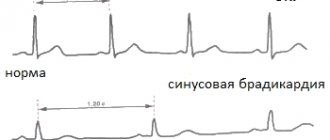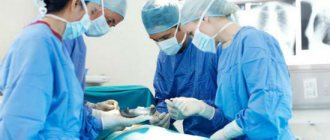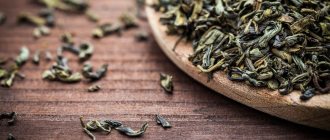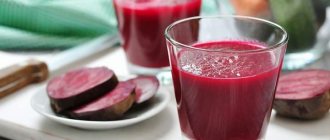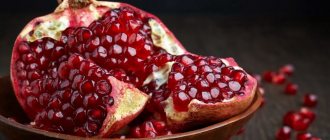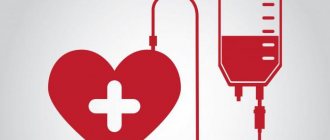In fact, we all need antioxidants to live active lives and feel good for many years to come. Women often take antioxidants to keep their skin firm and youthful, and rightly so. But these substances are also needed by the cells inside the body, where their work is not so noticeable, but is also very important. They protect the genetic material of eggs, cells of the immune system, and blood vessels... How do they do this, and why does the body need antioxidants? This is what we will talk about.
Free radicals and antioxidants
Antioxidants are our body’s protectors from free radicals. Free radicals are reactive molecules. They damage cells and their contents (including genetic material), disrupt natural processes (division, regeneration, energy production), and cause many unwanted changes in the body.
! For those who want to know more: Free radical activity is caused by the fact that they are missing one electron, an unstable state. Free radicals steal missing electrons from other molecules to fill the void. These reactions do not pass without a trace, such a damaged molecule can no longer fulfill its role in the body, and itself turns into a free radical, or, which also happens quite often, breaks up into two parts, each of which goes in search of the missing electron. The number of free radicals increases like an avalanche. If a free radical encounters molecules inside a cell, it disrupts them or the molecules that make up the cell wall. In the same way, free radicals act on blood cells and the walls of blood vessels, on all other organs and tissues.
Typically, free radicals are byproducts of oxygen oxidation in the body or are “produced” by the body specifically during inflammatory processes. The amount of free radicals in the body is controlled by the body's own antioxidants. An antioxidant, when it encounters a free radical, binds it and makes it inactive.
However, under the influence of factors such as environmental pollution, car exhaust, smoking, ultraviolet radiation, cosmetics with preservatives, contact with pesticides, free radicals are formed in huge quantities and the body’s own antioxidants are not enough to keep them under control. This has a negative impact on health. The reproductive system suffers especially severely, the functioning of many organs, as well as the endocrine and cardiovascular systems, deteriorates, the immune system suffers, and unwanted age-related changes develop.
Types of antioxidants
There are two types of antioxidants - those that the body produces itself (for example, coenzyme Q10), and those that we get from food. They are called endogenous (“born inside”) and exogenous (“born without”), respectively.
These substances may have different structures and belong to different classes of compounds. Their properties may have:
- minerals (selenium, zinc);
- some vitamins (C, E);
- some flavonoids (for example, rutin, catechin and others);
- carotenoids (lycopene and beta-carotene) and other substances.
Antioxidants and women's reproductive health
In some situations and conditions, a woman’s need for antioxidants increases or they are required to support a particular function and preserve women’s health.
Taking oral contraceptives
Oral contraceptives (COCs), or birth control pills as they are called, are hormones that not only prevent pregnancy, but also affect other processes. In particular, they suppress the synthesis of the body’s own antioxidants, change the blood clotting system, increase the load on the liver and damage it. Therefore, oral contraceptives, unfortunately, have side effects: bleeding, increased blood viscosity, deterioration of small vessels, darkening of the skin, chest pain. Taking antioxidants helps eliminate some of the side effects: vitamins A and E, rutin and vitamin C. Vitamin E, together with vitamin C and A, participate in the regulation of ovarian function, protect liver cells from damage when taking COCs, vitamin E normalizes blood viscosity, rutin with vitamin They prevent the appearance of spider veins and dark circles under the eyes. And what is very important, antioxidant support when taking birth control pills will help restore your cycle faster after stopping them.
Preparing for pregnancy and pregnancy after 35 years
After 35 years, the ovaries (and the entire reproductive system) begin to work less actively. The reserves of eggs are gradually depleted, and the hormonal balance also shifts towards “slowing down” the reproductive function. This means that the chances of pregnancy gradually decrease, although the woman can still become a mother. However, it is worth considering that the condition of the reproductive system and the entire body is somewhat worse than at twenty years old - previous diseases, unfavorable life factors, age-related changes, and the use of certain medications and contraceptives have an effect. Therefore, women over 35 years of age have a higher risk of pregnancy complications. In addition, the older the woman, the higher the risk of having a child with genetic abnormalities. This is due to the fact that the amount of damaged DNA in the ovaries increases with age.
But the rate at which women's reproductive systems begin to age can be changed with the help of antioxidants. They will protect the eggs from damage, help the body cope with the negative consequences of chronic diseases and bad habits, and thereby increase the chances of pregnancy, and during pregnancy they will reduce the risk of complications.
Mastopathy
Scientists have found that mastopathy is closely related to an increased amount of free radicals in the body. Therefore, for mastopathy, women are often prescribed antioxidants. The most effective in this case are coenzyme Q10, beta-carotene, lycopene, vitamins A and E. In addition to their direct effect, these substances enhance the therapeutic activity of other drugs, eliminate or weaken their side effects, stabilize the nervous system and strengthen the immune system. Antioxidants are taken both during treatment and for the prevention of mastopathy. So, if a woman is at risk for mastopathy (relatives with mastopathy, age over 35 years, late first birth, prolonged breastfeeding, abortion), then taking antioxidant drugs will reduce the risk of tumors in the breast.
Causes and signs of deficiency
With insufficient intake of antioxidants into the body, people lose clarity of thinking, decrease efficiency, weaken the immune system, deteriorate vision, and develop chronic diseases. Antioxidants speed up the healing process, help increase life expectancy, and reduce tissue damage.
Let's consider the reasons for the depletion of carotenoids, minerals, vitamins in the human body and what enhances the formation of free radicals:
- Exposure to heat.
- Stress.
- Pollution of the atmosphere, water, pesticides, household chemicals.
- Tobacco smoking.
- Ultraviolet rays of the sun, radiation.
- Injuries and wounds.
- Excessive physical activity.
- Infection with parasites, viruses, bacteria.
- Lack of natural antioxidants in the diet.
- Hypoxia.
Symptoms of antioxidant deficiency in the body:
- apathy;
- dry skin;
- fast fatiguability;
- increased irritability, nervousness;
- decreased visual acuity, sexual function;
- bleeding gums;
- muscle weakness;
- frequent infectious diseases;
- goose bumps on the elbows;
- low performance;
- poor sleep;
- depression;
- loss of teeth, hair;
- the appearance of premature wrinkles, rashes;
- growth slowdown.
In case of individual intolerance to vitamins and minerals - antioxidants, the need for compounds is reduced.
Antioxidant vitamins for women: types
Vitamins with a pronounced antioxidant effect include:
- Vitamin C. Protects capillaries and blood vessels, blood and immune system cells, as well as skin. Restores the normal course of biochemical reactions, especially those related to energy production. Together with rutin, it is needed by small vessels. Returns activity to vitamin E.
- Vitamin E. Particularly effective in protecting cell walls, skin, sex hormones and eggs from free radicals. Participates in the functioning of the blood coagulation system.
- Beta-carotene (provitamin A). It is converted into antioxidant vitamin A in the body or used independently. Beta-carotene has its own antioxidant activity, protects many body systems, including reproductive, and reduces the impact of harmful external factors (radiation, pollution) on the body.
Foods that contain large amounts of vitamin C, A, E
These vitamins have a whole range of beneficial properties. In order for them to be preserved in food products in the required volume, they must be eaten raw or semi-cooked. Foods rich in vitamin C include potatoes, citrus fruits, strawberries, tomatoes, viburnum, kiwi, and wild garlic.
Foods high in vitamin E include cereals, nuts, sprouted grains, cod liver, dried fruits, and seafood. Vitamin A is found in sufficient quantities in pumpkin, butter, carrots, cottage cheese, seaweed, eggs, and sour cream.
There are products that contain a complex of antioxidant vitamins. An example is red beans. In addition to the indicated group, it contains potassium, copper, and iron. This product cleanses the body of toxins and improves blood sugar levels. It is used mainly in boiled form.
Blueberries are a storehouse of vitamins. It additionally contains B vitamins, selenium, phosphorus, calcium and magnesium. Helps eliminate ophthalmological problems, relieves inflammatory reactions in gastrointestinal diseases, accelerates skin healing.
There is a large amount of pectin, vitamins, and tannins in prunes. Dried fruit increases hemoglobin levels and normalizes intestinal motility. It has a disinfecting and antitoxic effect.
How to get antioxidants?
Antioxidants are found primarily in fruits and vegetables. The leaders in the content of these substances are cranberries, blueberries, blackberries, artichokes and pinto beans (red variegated). For example, orange and red fruits contain a lot of beta-carotene and other carotenoids. Tea, nuts, seeds and seaweed are rich in antioxidants.
Antioxidants are sensitive to heat, long-term storage and are damaged during cooking and processing of foods. Therefore, only fresh seasonal fruits and vegetables are the source of these substances.
In addition, it is worth remembering that the content of antioxidants in a particular plant strongly depends not only on storage, but also on growing conditions, variety, and degree of ripeness. So it's really impossible to assess whether the diet contains enough antioxidants, even if a woman eats the proverbial "5 green servings" per day. Therefore, it is wiser to take antioxidant complexes to provide the body with these substances.
Antioxidants: instructions for use
Most dietary supplements are produced in capsule form - these drugs are the easiest to take. But sometimes antioxidants are found in powder form, which must be dissolved in water or other liquid before use (fresh juices are sometimes used instead of water).
Before use, you need to clearly find out why you need antioxidant drugs. Depending on the purpose of use, dietary supplements with different compositions are better suited. Indications for the use of antioxidants can only be determined by a doctor, but dietary supplements from the brands listed above will not cause harm if used correctly.
The number of doses per day and the duration of the course of administration are the most important elements of the correct intake of biologically active dietary supplements. Unfortunately, it is impossible to list universal rules for all antioxidants, since additives vary too much in composition and effect.
Important! Before using any additive, be sure to read the instructions from the manufacturer. You should not trust any online sources if they indicate different rules for taking dietary supplements.
Antioxidant complexes
When choosing an antioxidant complex for women, first of all, pay attention not only to what substances are included in the complex, but also to their quantity. If you live in a large industrial city or area with an unfavorable environmental situation, are over 35 years old, suffer from mastopathy or chronic diseases, or take hormonal contraceptives, then your need for antioxidants is increased.
Pay attention to the Synergin antioxidant complex. It contains 6 natural antioxidants in high dosages: ascorbic acid, rutin, vitamin E, coenzyme Q10 and beta-carotene. These substances act synergistically, that is, together they work more effectively than separately. It is important that Synergin contains both water-soluble and lipophilic antioxidants. This allows you to protect all cells, tissues and environments (blood, intercellular fluid) of the body.
THIS IS NOT AN ADVERTISING. THE MATERIAL WAS PREPARED WITH THE PARTICIPATION OF EXPERTS.
Daily norm
For the normal functioning of the nervous system and maintaining the health of internal organs, it is recommended to consume daily antioxidant vitamins and minerals in the following dosage:
- zinc – 8 milligrams for women, 11 milligrams for men (if you follow a strict vegetarian diet or raw food diet, the daily intake should be increased by 50% of the indicated dose, since the body absorbs less compounds from plant foods than from animals);
- selenium – 55 micrograms;
- vitamin E – 15 milligrams;
- ascorbic acid – 75 milligrams for women, 90 milligrams for men (smokers are recommended to increase the dosage by 45%, to 110, 125 milligrams, respectively)
- vitamin A – from 1 to 1.5 milligrams;
- copper – 2.5 milligrams;
- chromium – from 100 to 150 micrograms;
- manganese – from 3.0 to 4.0 milligrams;
- beta-carotene – from 3.0 to 6.0 milligrams.
Remember, a person’s daily need for antioxidants depends on the state of health, the presence of concomitant diseases, gender and age of the person.
